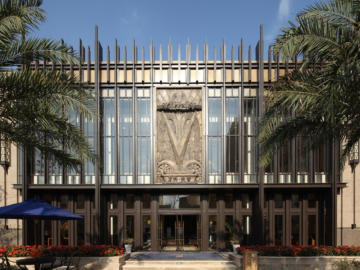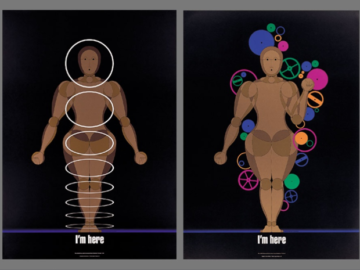 At the AIGA conference in Vancouver last year you talked about design influencing culture and how that, in turn, can influence the corporate structure, rather than the other way around—an honorable goal. It sounds like, with Massive Change, you’ve returned to Vancouver to do exactly what you were talking about. That’s quite a jump from, say, Life Style which, while it placed your practice in the cultural context, largely skirted a lot of the big issues you deal with in the show.
At the AIGA conference in Vancouver last year you talked about design influencing culture and how that, in turn, can influence the corporate structure, rather than the other way around—an honorable goal. It sounds like, with Massive Change, you’ve returned to Vancouver to do exactly what you were talking about. That’s quite a jump from, say, Life Style which, while it placed your practice in the cultural context, largely skirted a lot of the big issues you deal with in the show.
True, because Massive Change is really not about us at all, except perhaps in the sense that ti’s about our ambition, which is basically to articulate the future of design. It’s also our largest single project to date. The show itself covers 20,000 square feet. Life Style was a bigger project as a book, but smaller, too, in the sense that it was autobiographical. This is much more a research project about how the world is being transformed.
I’m sure you’d never say we can save the world by design, of course, but there is the idea that design will help solve world problems like global warming, genetic manipulation, and disappearing energy reserves that, given the current power structure, I’m afraid are intractable.
I agree that in our lifetime we will definitely have to face these crises. I understand your skepticism about all this because I’m a skeptic myself. When people tell me things I start digging to see whether they’re plausible or not. But what we discovered is that these things are already happening. Consider, for example, the potential of applications for renewable energy, which is now becoming absolutely mainstream. Of course, you’re right in the sense that these innovations may not be happening quickly enough.
Is all the fabrication contracted out or do you do a lot of it in the coffee room?
It’s a combination. We have some coffee room activity going on. For instance, one of the students is building a curtain of garbage. We’re talking about a shift in the manufacturing economy from a kind of vector model where you drive your car into the ground, to a cycle-to-cycle model where you continually flow that material through a system. so as part of rendering that transition we have you enter the room through a curtain of garbage.

The above excerpt is a sneak peek into our Design Annual 2009, which is available in our store today. Order one while they are still in stock.
If you are new to the blog, hello and welcome to our worldwide community of influential and bright designers and photographers. We are always looking for new talent and would love to see your best work. Submit an entry over here, and become a professional member today at graphis.com.





